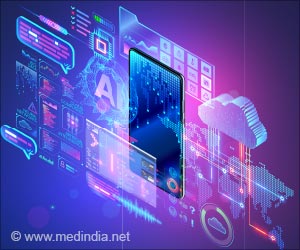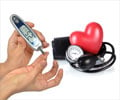AI-enabled CGM-directed insulin suspension has been promising for monitoring and preventing diabetes.
- Wearable continuous glucose monitoring (CGM) sensors are revolutionizing diabetes treatment with the introduction of technology such as artificial intelligence (AI) in the health industry
- AI-enabled CGM-targeted insulin suspension has shown promise in diabetes management and prevention by continuously monitoring blood glucose levels and categorizing them as time under range, time within range, or time over range
- Although there are some limitations in the readings of CGMs, manufacturers of device software are now acting as issue solutions for diabetic patients who self-monitor their blood glucose levels in order to track glycemic variations
TOP INSIGHT
AI-enabled CGM devices are revolutionizing diabetes management, resulting in enhanced patient experiences as well as restrictions.
AI-Enabled CGM Device Operation
A CGM system includes a sensor with a needle in the center that remains in the interstitial tissue or the subcutaneous layer just beneath the skin. Every 15 minutes, record the blood glucose levels in tissues. As a result, a tremendous amount of data is generated. Depending on the brand, a sensor can be placed in place for at least 7 to 14 days.The AI-powered program collects data constantly for 14 days and measures the amount of time spent in the blood glucose goal range, which is between 70 and 180 mg/dL, using a "time in range" metric.
The software then analyses all of the data and categorizes it as time under range, time within range, or time over range. It also keeps track of when the data was created, such as how long the patient was under the influence of low blood sugar (less than 70 mg/dL) or high blood sugar (more than 180 mg/dL).
As a result, based on the data given by CGM, the optimum time in the range is 70%. A reader is also available to read this data. When the reader approaches the sensor, it reads the data.
"We typically use CGM in the outpatient department," stated Dr. Sweta Budyal, Consultant, Diabetology and Endocrinology, Fortis Hospital Mulund.
CGM provides us with a clear image as well as the ability to change medicine and navigate through challenges at a specific moment for patients whose sugar levels rise on a daily basis.
The rise could be due to the type of food the patient is eating at the time or if there are gaps between meals. So there are a variety of issues that CGMs can help with. They are often useful in patients with unexplained low blood sugar, hypoglycemia in someone who does not have sweets, and people who are mild with several daily doses of insulin when intense sugar control is desired, such as in pregnant women."
After 7 to 14 days, the sensors can be removed and the data downloaded. It then produces a curve of all the glucose levels put together, known as the ambulatory glucose profile (AGP). This provides a wealth of information about how to appropriately control the patient's blood sugar levels.
Restrictions in the Readings
Although health technology has made it easier for people to interface with various health services and systems, it still has some limitations. "There are many situations where the sensor reading can be incorrect," said Dr. Anil Bhoraskar, senior diabetologist at SL Raheja Hospital in Mahim and secretary of the Diabetics Association of India. First, consider intraoperative hypothermia.To minimize the patient's metabolism during surgery, the room temperature is reduced to 18–16 degrees Celsius (°C), which produces hyperthermia and can result in an inaccurate measurement. As a result, subcutaneous blood sugar testing cannot be depended on during surgical operations or significant subcutaneous events."
"Secondly, in areas such as coronary artery bypass graft surgery (CABG patient) or major cancer surgeries, large amounts of fluids are sometimes infused to maintain blood pressure." Because of the hemodilution consequences of such perfusion into important organs, the CGMS value may be incorrectly low. As a result, that reading cannot be trusted during operation."
Another limitation of these sensors is their cost. Dr. Budyal explained: "For countries with limited resources like India, it is not affordable or accessible for everyone. So we have to use it a bit judiciously. A sensor will cost around Rs 3,500—3,500 in hospitals. And because a device can only be used for 14 days, a device used this way sounds more expensive for most patients. So, CGMS is something that we recommend when the patient does not have cost problems".
Manufacturers of Device Software Serve as Issue Solvers
Doctors feel that sustaining individualized treatment glycemic variability (that is, oscillations in blood glucose levels) without medication is risky and can lead to major problems. Dietary control can be useful in the long run. As a result, doctors now advocate home CGM monitoring devices.To track this, the patient is advised to examine her diet and learn from the reader what is beneficial or detrimental to her. Various device software vendors are now acting as issue solutions for diabetic patients who self-monitor their blood glucose levels in order to track these glycemic variations.
"With the help of CGM, users can continuously monitor their glucose levels and gain insight into which foods and activities work best for them," said Manan Chandan, Senior Director of New Initiatives at HealthifyMe. Trainers may analyze the data received by all of these devices and provide individualized advice to customers to help them optimize their diets and physical activities."
However, because the software generates a large amount of data on a regular basis, data security is a critical concern. Fitterfly CEO and Co-Founder Dr. Arbinder Singal responded, "We are all on Amazon-encrypted web servers and have the usual anonymized patient data, meaning it is all stored in three-layer encryption."
As a result, the data privacy rules are extremely serious. The government has also issued data privacy guidelines, which most businesses observe. We rigorously adhere to those criteria as well, and we never disclose any patient data with anyone without the patient's agreement."
AI-enabled CGM devices, according to health experts, help control patients' blood glucose levels by creating a lot of data and have a promising future. However, there are still holes that can be filled with better technologies and fresh research.
Source-Medindia
 MEDINDIA
MEDINDIA





 Email
Email










